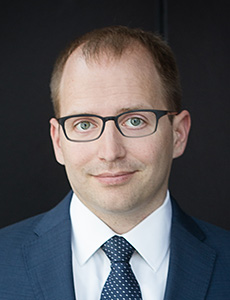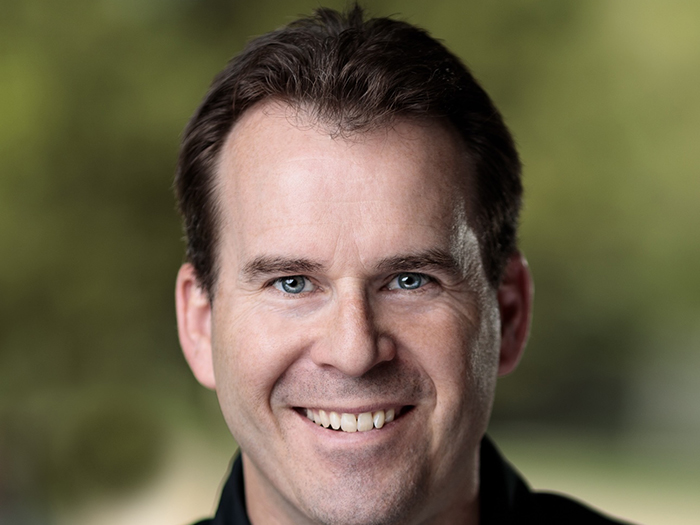Sponsored Content by The Hartford
How Insurers Who “Fail Fast” Produce Better Results

Perhaps the most painstaking part of an agent’s job is gathering all the details required by underwriters for a new policy submission. Or perhaps it’s waiting for a response. Previously, it could take carriers days to parse through the data and follow up with their decision.
The transaction — still driven largely by manual processes — begs for more digitalization.
Insurance carriers have begun to shift to a digital format through the development of proprietary carrier platforms designed to ingest, clean, and organize data quickly and without the need for human interference.
In the small commercial space, these platforms have offered an advantage to agents and underwriters. In the middle market and larger client space, though, they offer less value to agents simply because client solutions ultimately require more than one carrier.
“Agents for mid-sized businesses submit to a much broader audience of carriers. For these agents engaging with multiple markets, proprietary portals may force them to duplicate some of their work,” said Matthew Foran, head of alternative distribution, The Hartford.
“Agents usually have their process down pat, and they’ve developed their own shortcuts to boost efficiency. What we should be solving for is how to support these processes and enable the best approach for agents,” he added.
That’s exactly what The Hartford did in the development of its commercial account setup tool — or CAST — a platform that automates and dramatically speeds up the existing submission process for mid- and large-sized companies.
“We built a platform to ingest what agents send us in any format. The system extracts detail from documents, runs them through rating platforms and ultimately gets the information into the underwriter’s hands with a view of whether we are interested, what details are missing, and what range might we have in terms of initial terms and conditions,” Foran said.
“That process normally could take three to five days,” he added “with the new tool, the process now takes less than an hour and we have achieved a best time of six minutes and twelve seconds.”
How is this possible in an industry with a reputation for being slow to innovate and often behind the technological curve? Here’s how a change in mindset and culture drove results:
1) Ditching the “waterfall” model for an agile approach catches problems early and solves them faster.

Matt Foran, Head of Alternative Distribution, The Hartford
Large insurance companies typically follow the “waterfall” model of project management, which is linear and sequential. Out of a natural need to control risk, strict timelines and budgets are enforced.
“In this approach, you build a three-year plan, set a budget, create a bunch of Gantt charts, hire consultants and implementation specialists, and sign up with one large vendor,” Foran said. “Most of the work is done out of public view, and we see the result of the project on the other side of those three years.”
Agile product management, on the other hand, is much more iterative. Solutions are tested continuously and updates made incrementally, with no prescribed method for how certain milestones should be achieved.
“We started with the grand vision of cutting turnaround time on a new submission from five days to one hour,” Foran said. “Then we assembled an expert team and said, ‘Go prove it.’ We let them find the critical pieces of this process along the way.”
Under this approach, it took the team just 18 months to prove it.
2) Transparency and a “top-down” culture of innovation fosters collaboration.
Even in the early days of the new platform design, senior executives were involved in the process. Leadership’s interest in the work’s progress and not just the final results helped to reinforce innovation as a company priority.
This trickled down through the organization and supported the true inter-departmental collaboration necessary to build a tool that benefits every stakeholder.
“Normally, insurance companies would be unwilling to broaden the testing of new solutions if it adds expense or creates a burden for normal functions of the everyday business. That would be considered counterproductive to the overall strategy,” Foran said.
“But because our operations team was so integral in this work, they were willing to absorb some extra expense in order to conduct a bigger, more intensive test that went against some of their immediate goals.”
That culture of innovation also helps to attract top technology talent away from Silicon Valley.
“We now have the talent at The Hartford who architecturally and programmatically run at exact same speed and capabilities as some vendors,” Foran said.
3) Acceptance of failure allowed experts to think “outside the box.”

Tech startups operate under the mantra “fail fast, fail often, fail forward” — a motto not often embraced by the necessarily risk-averse insurance industry. But allowing for and even embracing failure had two critical advantages:
First, it allows experts room for experimentation. The team can attack a problem from a new angle without fear of reprimand, which may produce a better result in the long run. Second, failures present learning opportunities that can benefit future projects.
“Throughout this project, there was an awareness that failure was completely acceptable, provided you learned from it and carried it forward,” Foran said.
Developing CAST required that latitude because it was attempting to do something no other platform has done before, pulling together multiple disparate technologies.
“Things like optical character recognition (OCR), third-party data hydration, data indexing, data orchestration, predictive modeling, artificial intelligence (AI) for interpretation… these tools aren’t new. What’s new is pulling them all together and running them at the same time,” Foran said. “If you want to enter new territory, you have to leave room for unexpected speed bumps.”
What It Means for Agents and Their Customers
The speed and agility that went into the design and implementation of CAST translates to increased speed and agility for agents. That matters more at a time when people expect convenience and quickness from every service they use.
“Our ability to come back to them in a rapid and confident manner helps agents demonstrate their competency to clients. While they’re waiting for responses from 10 other carriers, we can tell them within hours whether we’re comfortable with the risk, what our terms and rate might be, and what additional information we need to get over the finish line,” Foran said.
This cuts down the frictional costs and frustration of continual back-and-forth with clients. Most importantly, this improved level of service comes at no additional cost to agents.
The Hartford has a track record of providing exceptional experience and increased ease-of-use for agents in the small commercial space, where it has focused investment in technology for the past 20 years. With the implementation of CAST, the same streamlined experience will now be possible in the more complex world of middle and large commercial risk.
To learn more, visit thehartford.com/specialization.
The Hartford® is The Hartford Financial Services Group, Inc. and its property and casualty subsidiaries, including issuing company, Hartford Fire Insurance Company. Its headquarters is in Hartford, CT.
![]()
This article was produced by the R&I Brand Studio, a unit of the advertising department of Risk & Insurance, in collaboration with The Hartford. The editorial staff of Risk & Insurance had no role in its preparation.










